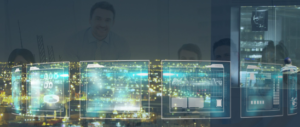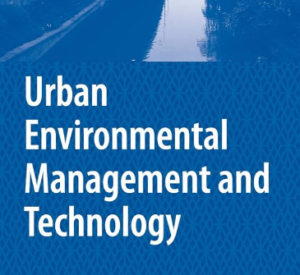
Technology in Urban Management: Changing Cities for Next Generations
Advances in technology are driving fast change in urban management. Effective government and better quality of living depend on the incorporation of technical solutions as cities expand and confront fresh problems. We shall investigate in this paper certain technological developments changing urban management, their advantages, and the direction of urban living.
Grasping Urban Management
Urban management is the set of techniques and procedures applied to supervise and arrange several activities inside a city. This covers public goods, infrastructure, transportation, environmental sustainability, and community involvement. Good urban design guarantees resilience, sustainability and livability of cities.
Technology’s Value in Urban Management
Urban surroundings’ growing complexity calls for creative solutions to management. Operations are streamlined, decision-making is improved and citizen involvement is encouraged in great part by technology. Technology is transforming how cities run from smart infrastructure to data analytics.
Intelligent Cities: A Technological Revolution
Describes a Smart City here.
A smart city improves performance, efficiency, and quality of living by use of digital technologies. Using data and technology, smart cities help to control resources, lower waste, and enhance public services. Important ingredients are artificial intelligence (AI), big data analytics, and the Internet of Things (IoT).
Ad advantages of smart cities
Smart cities maximize the utilization of resources, so saving money and lowering the environmental impact.
Faster responses in public services such trash management and emergency services made possible by technology help to improve them.
Digital channels let people engage in decision-making procedures, therefore strengthening their feeling of community.
Urban Management Key Technologies: Internet of Things (IoT)
Real-time data collecting and analysis made possible by the IoT links many devices and systems. IoT uses in urban management consist of:
Sensors and cameras tracking traffic movement allow smart traffic management to create adaptable traffic signals lowering congestion.
IoT devices track air quality, noise levels, and weather conditions, therefore offering urban designers useful information.
2. Analytics with Big Data
Mass of data becomes useful insights thanks to data analytics. Using big data, urban managers:
Analyzing past data helps cities to project infrastructure demands and population increase.
Data-driven insights enable garbage collecting paths to be optimized, therefore lowering running costs.
3. AI, or artificial intelligence
Predictive analytics and machine learning among other artificial intelligence applications improve municipal management by:
AI can examine intricate data sets and suggest best ideas for urban development.
AI systems can identify crime hotspots, therefore enabling law enforcement to more wisely distribute resources.
Case Studies of Effective Urban Design Tools
Barcelona: An Innovative Model of a Smart City
Barcelona is now leading in efforts at smart cities. The city put in place a combined platform linking several services like trash management, energy, and transportation.
Important Projects
Sensors in garbage cans track fill levels, therefore guiding collection paths.
Streetlights with motion sensors change brightness depending on foot traffic, therefore conserving electricity.
2. Singapore: Urban Sustainability Pioneer
Singapore uses technology to provide an environmentally friendly metropolitan setting. The city-state effectively manages resources by use of several smart technologies.
Prominent Projects
Sensors tracking water use and quality guarantee effective distribution and help to reduce waste.
Real-time information from public transit networks improves connection and lowers trip times.
Obstacles in Using Technology for Urban Management
Although there are many advantages, including integration of technology into urban administration presents certain difficulties. Important roadblocks include:
1. Security and Personal Privacy
Growing data collecting in cities raises privacy and security issues. Strong cybersecurity policies have to be followed by urban management to safeguard public data.
2. Divide Digital
Not every people have equal access to technology. Making ensuring that every member of the community may gain from smart city projects depends on closing the digital gap.
3. High Starting Expenses
Using modern technologies sometimes calls for large financial commitment. Cities have to create sustainable finance plans to back up these projects.

Technology’s Future in Urban Management:
1.One is more cooperation.
Urban management’s future probably calls for more cooperation among government, business sector and people. Smart city initiatives can get finance and innovation driven by public-private partnerships.
2. Improved Citizen Involvement
As communication technology develops, people will have more chances to participate in urban management activities. Digital channels will enable comments and involvement, therefore ensuring that policies meet the demands of the society.
3. Environmental Advancement
Integration of sustainable technologies will be critical as cities confront issues related to climate change. Future metropolitan settings will be shaped by developments in green infrastructure, sustainable transportation, and renewable energy.
Finally
Urban management is being revolutionized by technology, which helps cities to grow more sustainable, effective and sensitive to the demands of their people. Creating habitable urban environments going forward will depend on embracing innovation while tackling problems. Urban administrators may create 21st-century and beyond thriving cities by using technology.
This review provides a thorough manual for grasping the function of technology in urban administration, its advantages, difficulties and future directions. These developments will eventually help to define the cities of tomorrow, therefore transforming them into smarter and more resilient ones.